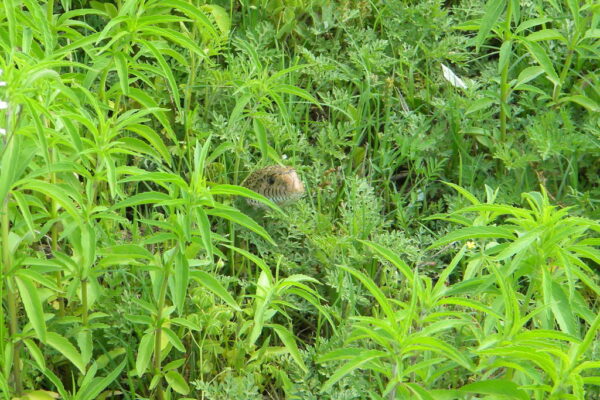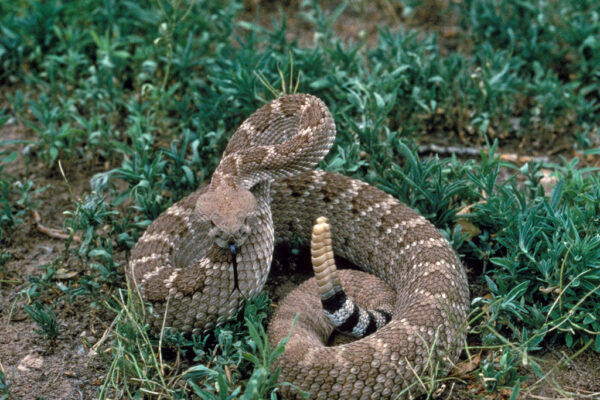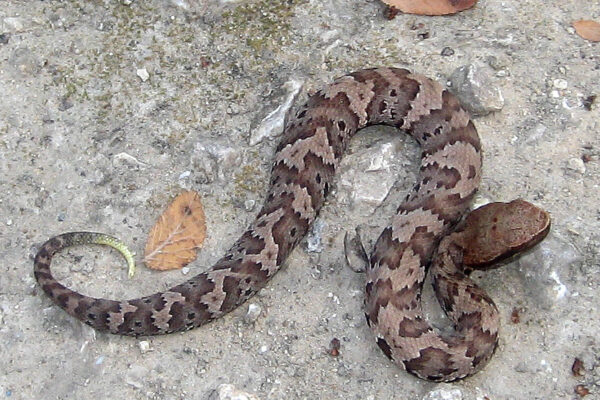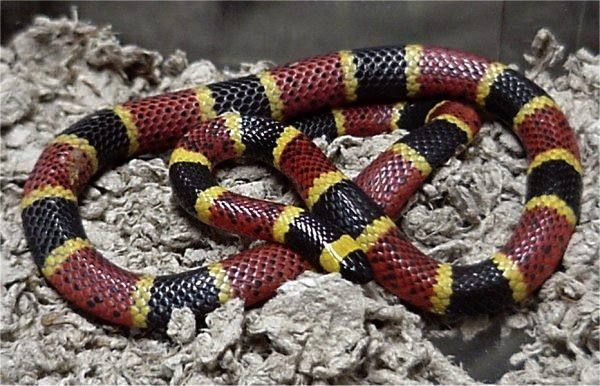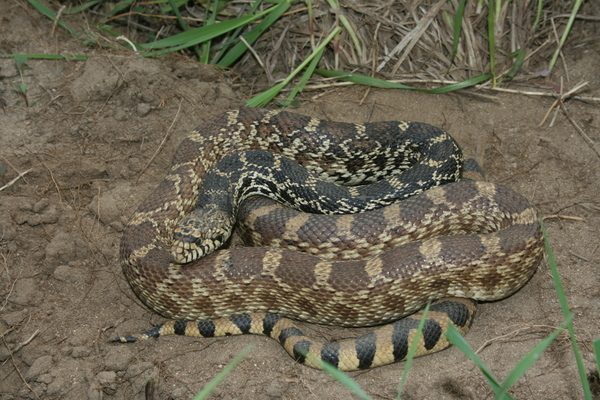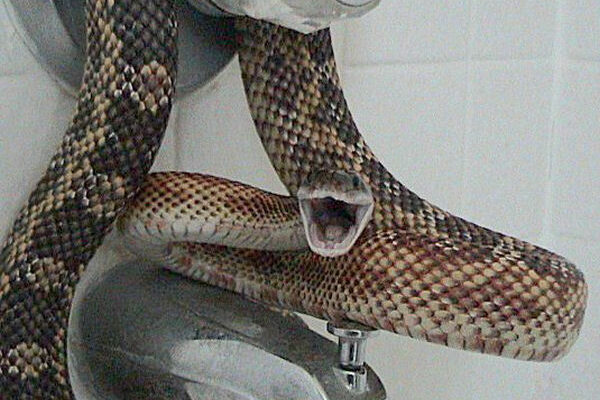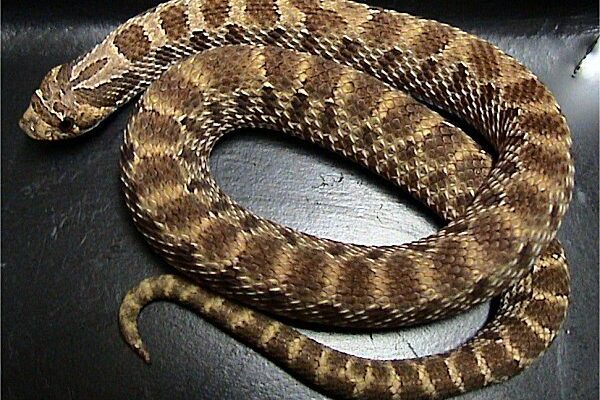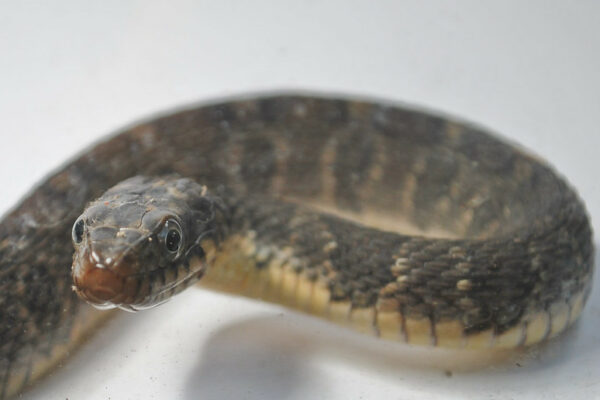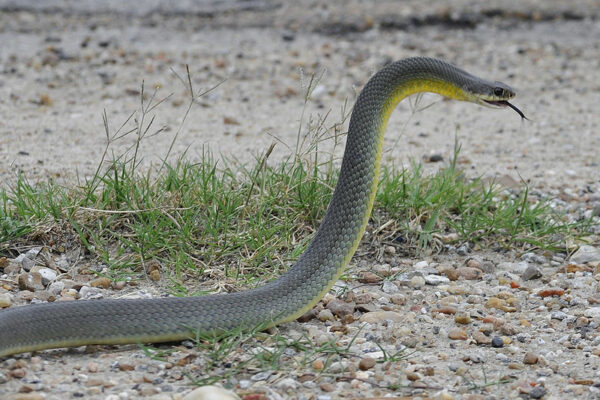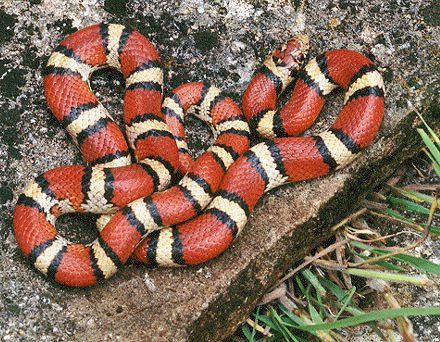When God forbade Adam and Eve to eat an apple from the tree of knowledge in the Garden of Eden, and the serpent persuaded Eve to take a bite of the apple and pass it to Adam for a bite, the serpent was labeled as a symbol of evil to humanity. God put a curse on the serpent (snakes) to forever crawl on the ground. “The Lord God said to the serpent, ‘Because you have done this, cursed are you above all livestock and animals. You will crawl on your belly and eat dust all the days of your life.” Genesis 3:1-4 KJV (paraphrased)
God’s original curse on the serpent has followed through the eons, and even today, practically every person on Earth is afraid of snakes and will kill them on sight. Here in America, we distinguish between poisonous and non-poisonous snakes, but the general attitude toward snakes is “a dead snake is a good snake.”
Western diamondback rattlesnake
Snakes have long been a symbol of dominance, daring-do and reproach. Ben Franklin created a cartoon flag showing a large snake sectioned with the colonies that had voted for the Declaration of Independence, with the words, “Join or die.” The Gadsden flag of the American Revolution showed a coiled timber rattler with the words, “Don’t tread on me.” The Mexican national coat of arms shows a golden eagle with a rattlesnake in its beak and claws.
There are many snakes in the world. Texas has a list as long as your arm, but only four types are poisonous: rattlesnakes, copperheads, cottonmouths and coral snakes. The first three are pit vipers with long fangs, but the coral snake does not strike a victim and inject venom. It puts venom into a victim by chewing.
Poisonous snakes
Depending on where you live, it is likely that you will never come in contact with a poisonous snake. The diamondback rattlesnake and the copperhead inhabits the western two-thirds of the state; the copperhead and the cottonmouth live in East Texas; the canebrake rattlesnake lives in restrictive habitats of East Texas and the Gulf Coast. The colorful coral snake inhabits the southeastern one-third of the state.
Cottonmouth snake-Jim Evans photo
Copperheads, and their cousins, the cottonmouths, have smaller venom sacks and shorter fangs, and therefore do not propose the danger of death in humans or animals. However, their bites must be taken seriously and treated.
Coral snakes seldom inflict serious injury to humans because they have to chew on a victim and let the venom run into the wound. I can’t remember reading of anyone being harmed or killed by a coral snake bite.
Texas coral snake-LA Dawson photo
As expected, a bite from a large rattlesnake with full venom sacks can kill a small child or an animal that weighs less than 50 pounds, when the bite is on the main parts of the body. However, death can be averted if the bite it kept cold and is treated correctly and soon.
Non-poisonous snakes
Believe it or not, a lot of folks would not prefer to kill a non-poisonous snake because they feed on rodents and are useful to many people. A non-poisonous snake can be spared if the guy or gal with the gun or garden hoe will look carefully at the snake before giving it the coup d’ grace. Here are some things to look for when you want to save a non-poison snake—both in color and in body structure.
Bull snake-LA Dawson photo
Rattlesnakes are easy to identify if you can see the head or tail. Pit vipers have an arrowhead-looking head because of the venom sacs on each side of the head. A close look at the eye (if you dare) shows an elliptical pupil, and snakes that have recently shed their skin will show strong, vivid marking such as the diamond-shaped markings on the western diamondback, or the chevron-shaped bands on the canebrake rattler. All rattlesnakes have rattles, but they don’t always make a rattling sound. The diamondback has black stripes around the base of its tail; the canebrake has a velvet-black solid color on the tip of its tail.
Texas rat snake-LA Dawson photo
Snakes often confused with the rattler are the bull snake, Texas rat snake, and hognose snake. All have noticeable back patterns, but with round heads and NO rattles.
Hognose snake-LA Dawson photo
The cottonmouth moccasin is often confused with the diamondback water snake and the blotched water snake. Remember: when approached, the cottonmouth will pull together and open its white mouth.
Blotched water snake-Josh Henderson photo
The copperheads are often confused with the Texas rat snake, yellow bellied racer, and hognosed snake. Look at the head. The copperhead will have an arrowhead-shaped head.
Yellow bellied racer snake-David Sledge photo
The coral snake is often confused with the Texas milk snake, which is just as colorful, but the color patterns do not tough red with yellow. Remember this rhyme: Red on yellow kills a fellow; red on black, venom lack.
Milk snake-Mike Pingleton photo
Even though the general public detests all snakes, only a few are poisonous, and you may never see one. All except the colorful coral snake will be rather large, 2-3 feet long and big around as your thumb, or will have elongated stripes and be small. So take care and let the useful, harmless snakes live.

